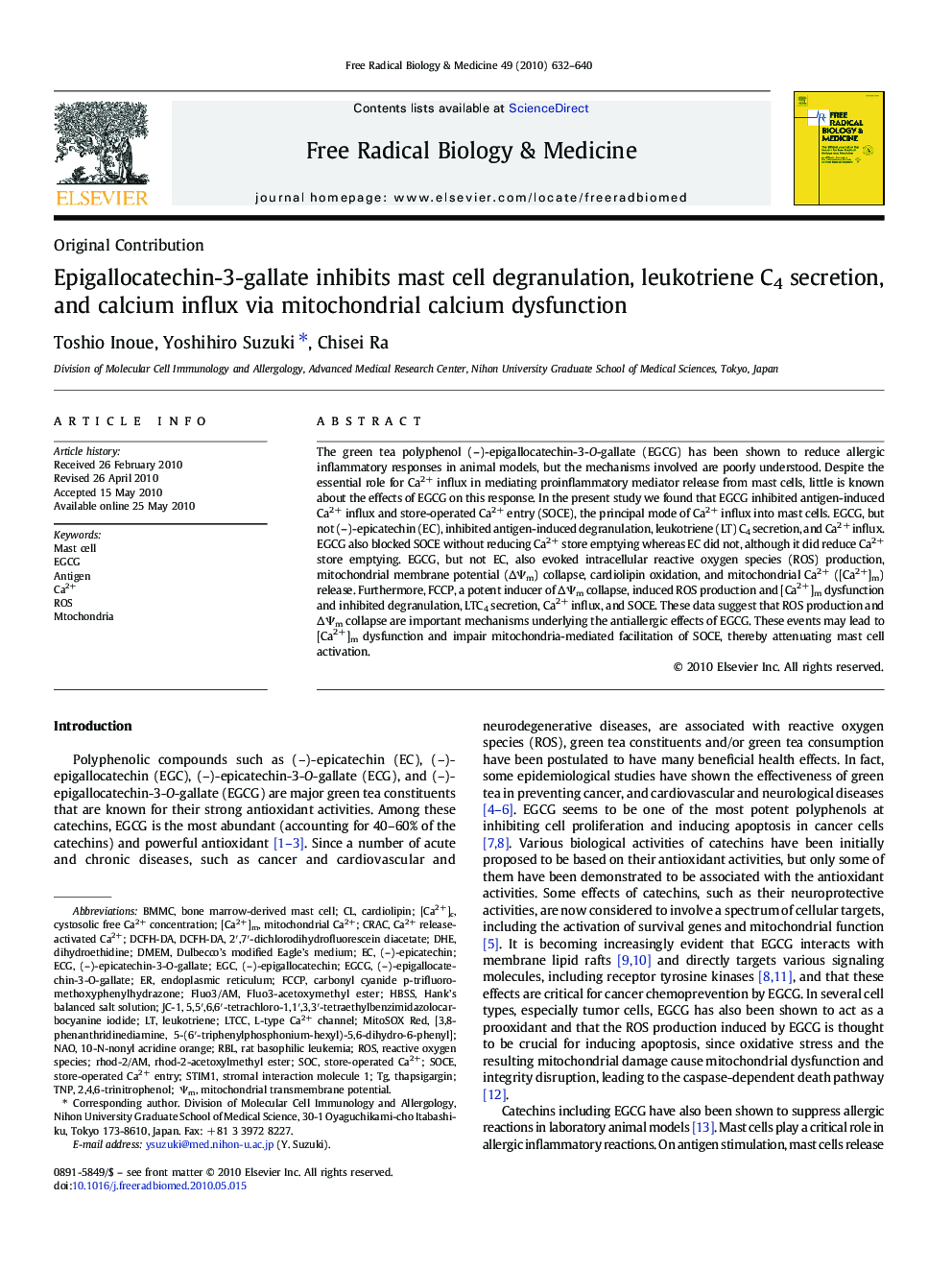| Article ID | Journal | Published Year | Pages | File Type |
|---|---|---|---|---|
| 1909272 | Free Radical Biology and Medicine | 2010 | 9 Pages |
The green tea polyphenol (–)-epigallocatechin-3-O-gallate (EGCG) has been shown to reduce allergic inflammatory responses in animal models, but the mechanisms involved are poorly understood. Despite the essential role for Ca2+ influx in mediating proinflammatory mediator release from mast cells, little is known about the effects of EGCG on this response. In the present study we found that EGCG inhibited antigen-induced Ca2+ influx and store-operated Ca2+ entry (SOCE), the principal mode of Ca2+ influx into mast cells. EGCG, but not (–)-epicatechin (EC), inhibited antigen-induced degranulation, leukotriene (LT) C4 secretion, and Ca2+ influx. EGCG also blocked SOCE without reducing Ca2+ store emptying whereas EC did not, although it did reduce Ca2+ store emptying. EGCG, but not EC, also evoked intracellular reactive oxygen species (ROS) production, mitochondrial membrane potential (∆Ψm) collapse, cardiolipin oxidation, and mitochondrial Ca2+ ([Ca2+]m) release. Furthermore, FCCP, a potent inducer of ∆Ψm collapse, induced ROS production and [Ca2+]m dysfunction and inhibited degranulation, LTC4 secretion, Ca2+ influx, and SOCE. These data suggest that ROS production and ∆Ψm collapse are important mechanisms underlying the antiallergic effects of EGCG. These events may lead to [Ca2+]m dysfunction and impair mitochondria-mediated facilitation of SOCE, thereby attenuating mast cell activation.
